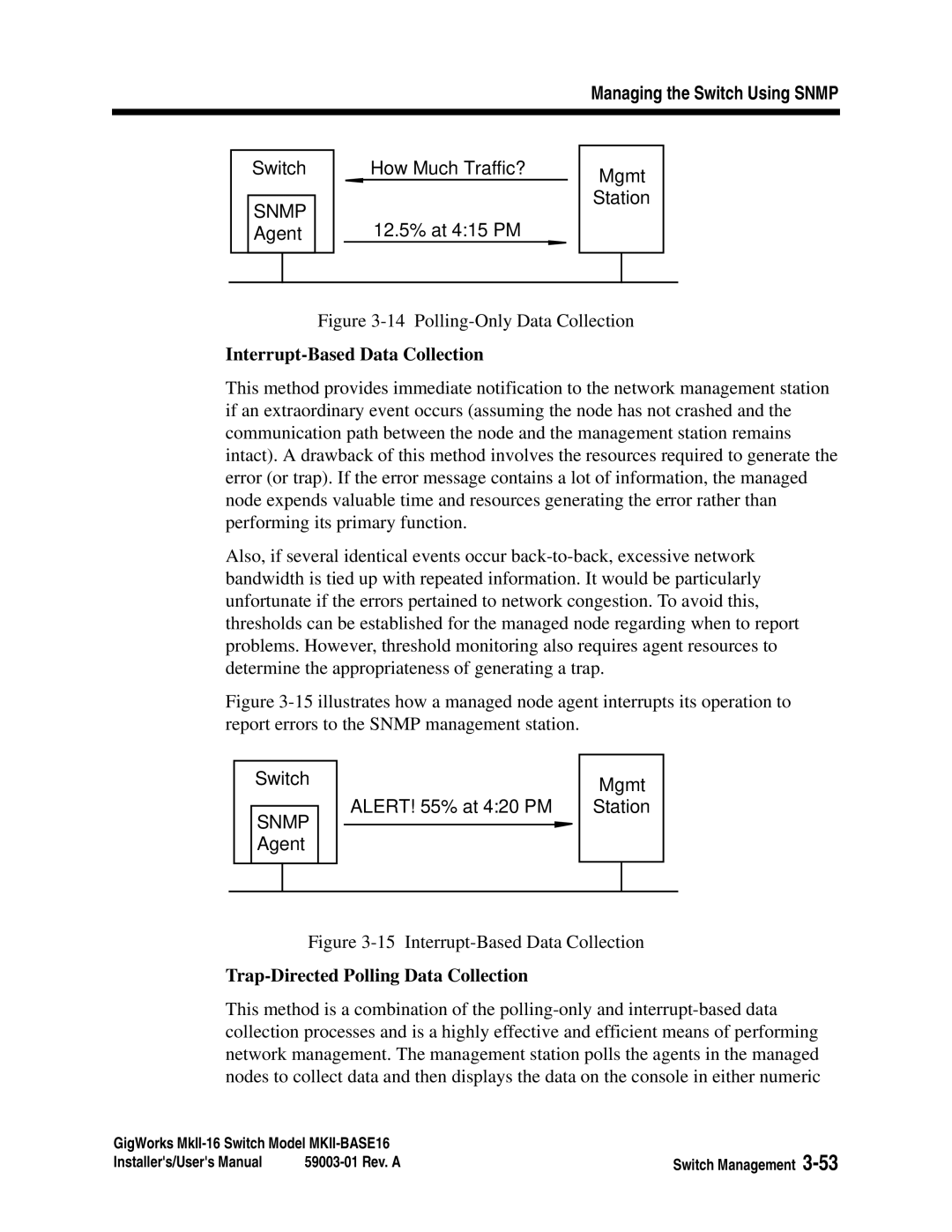
Managing the Switch Using SNMP
Switch
SNMP
Agent
How Much Traffic?
12.5% at 4:15 PM
Mgmt
Station
Figure 3-14 Polling-Only Data Collection
Interrupt-Based Data Collection
This method provides immediate notification to the network management station if an extraordinary event occurs (assuming the node has not crashed and the communication path between the node and the management station remains intact). A drawback of this method involves the resources required to generate the error (or trap). If the error message contains a lot of information, the managed node expends valuable time and resources generating the error rather than performing its primary function.
Also, if several identical events occur
Figure 3-15 illustrates how a managed node agent interrupts its operation to report errors to the SNMP management station.
Switch
SNMP Agent
ALERT! 55% at 4:20 PM
Mgmt Station
Figure 3-15 Interrupt-Based Data Collection
Trap-Directed Polling Data Collection
This method is a combination of the
GigWorks | Switch Management | |
Installer's/User's Manual | ||
